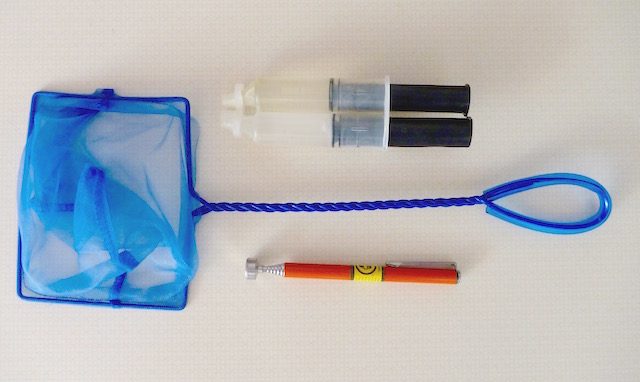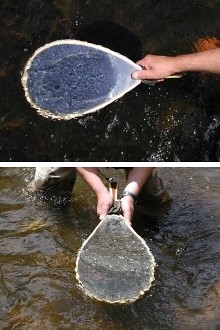So this is a meaty question, and I don't expect to gain the knowledge I need from this thread. I am more hoping you gents can point me towards a good resource, be it a book, videos, etc.
When I get to a body of water, I overturn rocks, check vegetation, the banks, etc. looking for insects that might be on the trout menu for the day. That is easy enough. I pull out my fly box and grab something that looks as close as possible. My problem is that I do not know enough about entomology to understand the species, and stage in it's life cycle.
Example: "Okay, this looks similar...but should it be an emerger? A nymph? Is it old enough casing and therefore I should be going dry?"
I feel like this (and setting on the subtle hits when nymphing) is my weakest skill and I am looking to change that. I checked the google machine and found "Matching the Hatch" by Ernest Schwiebert & James Prosek, "Pocketguide to Western Hatches" by Dave Hughes, and "Hatch Guide for Western Streams" by Jim Schollmeyer. Any recommendations before I drop my hard earned bills on a book?
So this is a meaty reply:
I have found that identifying an UNKNOWN nymph down to the species by reading a book is a fool's journey unless you are reallllly committed!! If you are committed and want to try drinking from a firehose, the best book IMHO is:
Aquatic Entomology: The Fishermens Guide and Ecologists Illustrated Guide to Insects and Their Relatives by W. Patrick McCafferty
Aquatic Entomology: The Fisherman's And Ecologist's Illustrated Guide To Insects And Their Relatives (Crosscurrents): W. Patrick McCafferty, Arwin Provonsha: 9780867200171: Amazon.com: Books
Here is what I suggest you do instead.
STEP 1:
Learning entomology is like building and furnishing a house. You first need a solid foundation, which is very basic knowledge about trout foods. One of the best BASIC books is Dave Whitlock’s
Guide to Aquatic Trout Foods. From there you can go to more specific books but I suggest you borrow this book from your library.
Then get a hatch chart for the waters you will be fishing. If there is no hatch chart, consult knowledgeable fly fishers. Some of them will know the species. In my opinion it is a waste of your time to track down the species when others have done it for you.
Then use
https://www.troutnut.com/ to read about the species in the hatch chart. Use that information in Steps 3, 4, and 5.
STEP 2:
Once you know the basics by “book learning” and "hatch chart" investigation, it is time to get down and dirty and learn by doing. Get yourself a seine and actually find out what is in the river
at the location you are fishing. Pick and kick some rocks so you can actually see the nymphs and pupa. Seine behind the rocks to gather samples. Look at what you have gathered and group them. Are there mayfly nymphs, stonefly nymphs, caddis pupa? Apply the book knowledge and local knowledge to group the aquatic forms of the major hatches in your hatch chart.
Use the seine to filter out the emergers and adults in and on the water during a hatch. Use that knowledge to pick the correct fly during the hatch.
I made myself
a telescoping sampling net that I can extend to catch flying insects out of the air like a small butterfly net. I can extend under water to the river bottom to collect samples, or collect sample right at the surface.
Here's how to make a telescoping seine/sampling net:
You need an aquarium net, epoxy, and a telescoping handle. You can get one at Harbor Freight which has a magnet on the end for picking up lost metal objects. OR you can use an expanding antenna from an old broken transistor radio or a telescoping pointer.
1. Bend the net hand back over the front of the net. The handle in the photo would then be folded back over the opening in the photo above and pointing to the left side rather than to the right side. This seems strange but I will explain why later.
2. Take the end off of the retractable magnet. Put it next to the net handle. Measure how long the net and the telescoping handle can be for the net to fit easily into one of your large vest pockets even with a fly box in the same pocket.
Now you know why you folded the handle back - so the telescoping handle is bent over the net so it can fit into a vest pocket.
If the net is too wide to fit into your vest pocket, you will need to cut off the frame and make a smaller frame out of coat hanger wire and put the net on it. That is what I had to do.
3. Cut the end of the net wire handle and take the plastic coating off of the one of the frame wires of the net. Now try to figure out how many sections of the telescoping handle you have the remove so that the wire will fit into the hollow end section. If you make your own frame out of coat hanger wire, use the coat hanger wire to figure out how many hollow sections of handle your will need to remove.
You can tell by the photo that the second or third section is large enough for the net wire frame to slip into it.
4. From the measurement you made in instruction (2), cut back the net handle so it it is 2 inches longer. Shorten one of the plastic coated wires by 2 inches. Remove 2 inches of the plastic from the other net handle wire, straighten the wire, and put it into the handle.
Check to see if the net will fit into the vest with a fly box in the same pocket. Adjust the handle length as needed.
If you are sure everything is right, then epoxy the the cut end of the handle wire to make it smooth. Pull out only about 1 inch of the wire from the hollow end of the tube, coat it with epoxy, and insert it back into the hollow tube of the retractable handle. Remove the excess epoxy.
Be careful with the epoxy. DO NOT USE TOO MUCH EPOXY or some of it will come out of the bottom of the hollow tube and it will glue the handle tubes together.
Now you have a telescoping sampling net that can be used to catch flying insects as well as floating ones. I find it especially useful to sample things floating below the surface film and also to sample insects living in weed beds or aquatic vegetation. With net downstream of the vegetation, shake or kick the underwater vegetation with your foot and insects will be captured by the net. I have found scuds, aquatic worms, pupa that you would not know were present if you did the traditional turn-over-the rock-and-look ploy. Not all fish food crawls around on the stream bottom. In Wisconsin it is also useful for sifting through the muck for Hexagenia nymphs and other burrowing nymphs.
STEP 3:
Next get a stomach pump and learn how to use it properly so you don’t injure fish. It will allow you to see what the fish are actually eating. Use it when you catch a fish nymphing and it will tell you what the fish ate which will tell you what aquatic insects are present in the waters you are fishing.
Here’s a start on learning about Stomach Pumps. Get a small plastic dish to put the sample in and if you are going to save the sample, get small glass or plastic tubes with screw caps filled with alcohol:
Stomach Pumps
YouTube
YouTube
STEP 4:
Then start “filling the rooms of the house.” Like a house, a river has rooms. These rooms are the different types of river habitat from the fastest to the slowest flows. They are rapids, riffles, runs, pools, and flats.
By filling the rooms, I mean learn what types of insects live in each “room”of the river. Stoneflies, for example, like very fast waters that have a rocky bottom. hence the name stoneflies. Mayflies have adapted by changing their body shape so you have the the clingers, crawlers, swimmers, and burrowers. Clinger have flat bodies so they can cling to substrate in the fastest flows. Crawlers inhabit fast water but not as fast as the clingers. Burrowers are in the slow flow edges and flats with silty bottoms.
Use your book knowledge and practical knowledge to read the water. When you are in a specific “room” in the river, use your knowledge to fish with imitations of the insects you know live in that “room.”
If you have performed steps 1 - 4, you will have a hatch chart for you waters. You will know what room (type of water) the aquatic form lives and you will know WHEN they will emerge. You will know where the adults will be and that may NOT be where they underwater nymphs live.
For example, the first major hatch in my local stream is Ephemerella Subvaria - the Hendrickson Hatch. I know the nymphs are crawlers and live in riffles. So I fish the riffles pre hatch with a pheasant tail nymph.
When they hatch, you can fish the riffles but I like fishing the runs or pools BELOW the riffles where the adults will be found.
Then you can fish the spinner fall in the late afternoon or evening.
After the hatch is over you know that there are fewer nymphs in the riffles because the Hendrickson nymphs are gone.
http://www.troutnut.com/hatch/7/Mayfly-Ephemerella-subvaria-Hendrickson
STEP 5:
Finally, here is an excerpt from one of
my previous posts on reading water:
The standard view of reading the water is reading the river architecture to locate fish. This is the standard approach to reading the water. It is analyzing the hydraulics of the river and the needs of the trout to determine the likely holding areas for fish. It deals with the PHYSICAL characteristics of the river. The next fundamental skill is presentation. I have read that, “Successful fly-fishing is built around two fundamental skills: Reading water and presentation."
Allow me add a third fundamental skill. I think of reading the water as a process of 3 and not 2 parts/layers. The second layer and a third layer are reading the food and reading the approach (presentation)
It is well known that certain water types hold certain types of food. Riffles for example hold the clinging and crawler type of mayfly nymphs and some stoneflies. Faster water with a greater gradient hold stoneflies and clinging mayflies. Rapids/heavy riffles are too fast for crawlers. Slow water hold burrowing mayfly nymphs. Vegetation can hold scuds. Water near the shore or under trees have terrestrials.
What I am saying is that not all water types hold all types of food. You can read the physical characteristics of the river to understand where trout are likely to be, but reading the biological characteristics; the food in that location should be the next step to reading water. If we read the food correctly, we are more likely to be successful.
The third step is reading the approach and presentation. Where is the best location to stand and what cast(s) should be made. This is highly individual and is determined by your own personal wading and casting skills and how you want to fish the water.
As you read the physical nature of the water, simultaneously read the biology (food) which is present, and your possible forms of presentation. If you think only about the narrow definition to reading the water, you would not think of fishing a beetle or ant downstream from overhanging trees.




